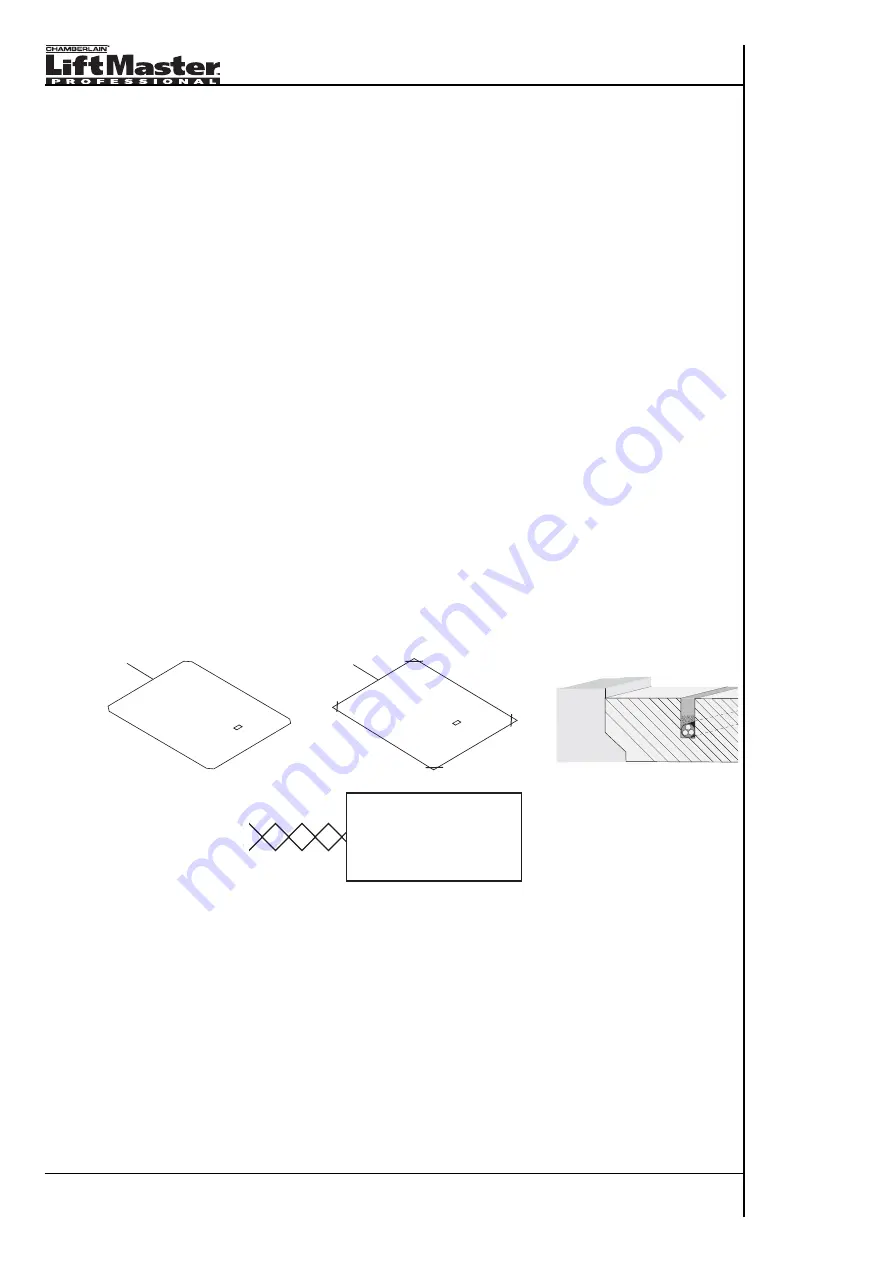
15/40
Notes
6.3
Contact loops (induction loops) – description
A contact loop reacts to metal and is especially suitable for safe operation of barriers.
The dimensions, number and installation of loops has to be executed with great care.
Principally the following applies:
• Control loops prevent a premature closing. The most important loop for this is located underneath
the barrier pole (see Examples) and has to secure the entire length of the barrier pole. As long as
the vehicle is standing on the loop the barrier cannot be closed. After leaving the loop the
automatic closing mechanism is activated. This may happen immediately or after a short delay.
• Opening loops are installed infront of barrier unit and activate it like a switch. The distance
between both loops may be 1m at the most. Larger distances may cause problems with short or
slow vehicles.
• Motorbikes and bicycles can also be recognized by the loops. For this purpose special lanes must
be created and identified (e.g. Motorbike Lane). A car loop cannot be a motorbike loop and vice
versa.
• The loops should be installed at a minimum depth underneath road surface. The deeper the loop is
situated the less the detection. Particularly vehicles with higher ground clearance and also trailers
might therefore not be detected. The detection of trailers or campers is difficult due to their flooring
often being made of wood and thus not being detectable until axle crosses the loop. Either a
second loop has to be installed behind the barrier which the pulling vehicle must cross first or the
automatic closing has to be adjusted according to the trespassing speed. Photocells may be
installed as an alternative for added security.
Zule
itun
g
E infrä
sun
g Dra
ufsich
t
E ck
en
diag
onal
gesc
hnitte
n
S chl
eifenv
erlegung
Drauf
sicht
Zulei
tun
g































